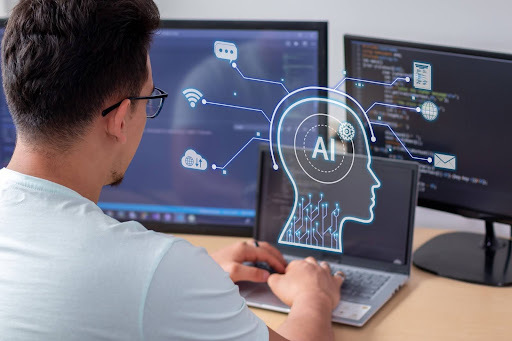
According to a recent response from Chat GPT, “Artificial intelligence (AI) can be categorized into various types, based on its capabilities and functionalities. AI refers to the simulation of human intelligence processes by machines, particularly computer systems. It involves the development of algorithms and models that enable computers to perform tasks that typically require human intelligence - such as problem-solving, decision-making, natural language understanding and perception.”
So let’s look at 10 different types of artificial intelligence that are either currently used, or are in the development stages, in hopes to be used in the near future:
Narrow AI, also known as Weak AI or Artificial Narrow Intelligence (ANI), is designed for a specific task or a narrow range of tasks. It excels in performing well-defined tasks but lacks general human-like intelligence. Examples include virtual personal assistants like Siri or Alexa, recommendation systems and chatbots.
General AI, also known as Strong AI or Artificial General Intelligence (AGI), possesses human-like intelligence. It can understand, learn and apply knowledge across a wide range of tasks, similar to human intelligence. Achieving AGI is a long-term goal of AI research, and it does not currently exist.
Artificial Superintelligence is a hypothetical form of AI that surpasses human intelligence in every aspect, including problem-solving, creativity and emotional understanding. ASI is purely theoretical and raises ethical and existential concerns.
Machine Learning is a subset of AI that focuses on developing algorithms and models that allow computers to learn from data and improve their performance on specific tasks. It includes supervised learning, unsupervised learning and reinforcement learning.
Deep Learning is a subfield of machine learning that uses neural networks with multiple layers (deep neural networks) to process and analyze data. It has been particularly successful in tasks like image and speech recognition.
Reinforcement Learning is a type of machine learning where an agent learns to make decisions by interacting with an environment. It receives feedback in the form of rewards or penalties, enabling it to optimize its actions over time.
Natural Language Processing focuses on enabling computers to understand, interpret and generate human language. It is used in applications like language translation, sentiment analysis and chatbots.
Computer Vision involves teaching machines to interpret and understand visual information from the world, such as images and videos. It is used in image recognition, object detection and autonomous vehicles.
Expert Systems are AI systems designed to mimic the decision-making abilities of human experts in specific domains. They use knowledge bases and rules to provide expert-level advice or make decisions.
Robotics combines AI, sensors, and hardware to create machines capable of performing physical tasks. Robots can be used in various fields, including manufacturing, healthcare and space exploration.
These are some of the major types and subfields of artificial intelligence, each with its own focus and applications. AI research and development continue to advance, leading to innovative applications across various industries.
Next month we will deal with part 3 of 4 - “Artificial Intelligence: Does AI Influence Web Development?” followed by a final blog, “Artificial Intelligence: How Does it Affect Our Everyday Life?”
